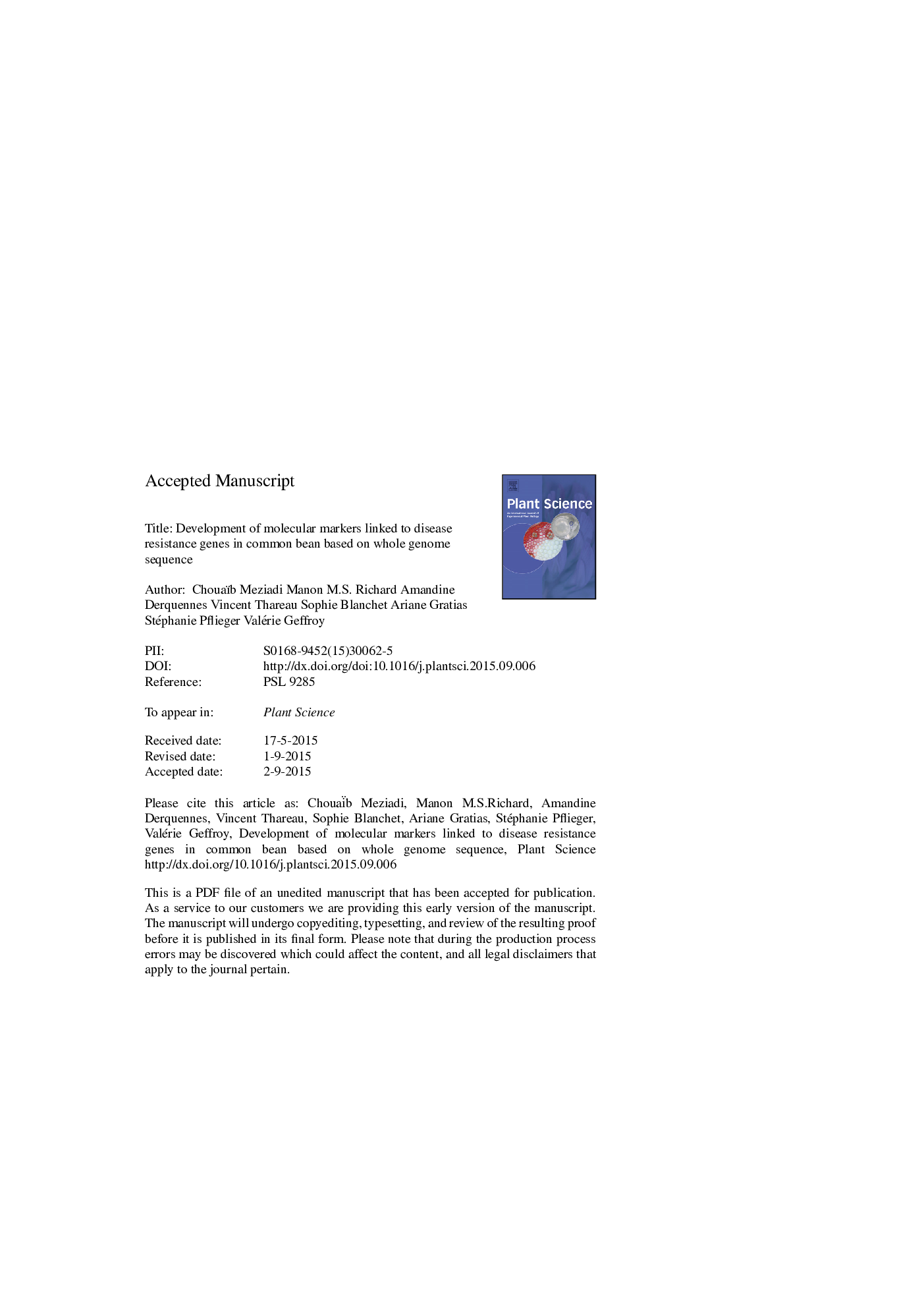| Article ID | Journal | Published Year | Pages | File Type |
|---|---|---|---|---|
| 8357376 | Plant Science | 2016 | 19 Pages |
Abstract
Common bean (Phaseolus vulgaris) is the most important grain legume for direct human consumption in the world, particularly in developing countries where it constitutes the main source of protein. Unfortunately, common bean yield stability is constrained by a number of pests and diseases. As use of resistant genotypes is the most economic and ecologically safe means for controlling plant diseases, efforts have been made to genetically characterize resistance genes (R genes) in common bean. Despite its agronomic importance, genomic resources available in common bean were limited until the recent sequencing of common bean genome (Andean genotype G19833). Besides allowing the annotation of Nucleotide Binding-Leucine Rich Repeat (NB-LRR) encoding gene family, which is the prevalent class of disease R genes in plants, access to the whole genome sequence of common bean can be of great help for intense selection to increase the overall efficiency of crop improvement programs using marker-assisted selection (MAS). This review presents the state of the art of common bean NB-LRR gene clusters, their peculiar location in subtelomeres and correlation with genetically characterized monogenic R genes, as well as how the availability of the whole genome sequence can boost the development of molecular markers for MAS.
Related Topics
Life Sciences
Agricultural and Biological Sciences
Plant Science
Authors
Chouaïb Meziadi, Manon M.S. Richard, Amandine Derquennes, Vincent Thareau, Sophie Blanchet, Ariane Gratias, Stéphanie Pflieger, Valérie Geffroy,
